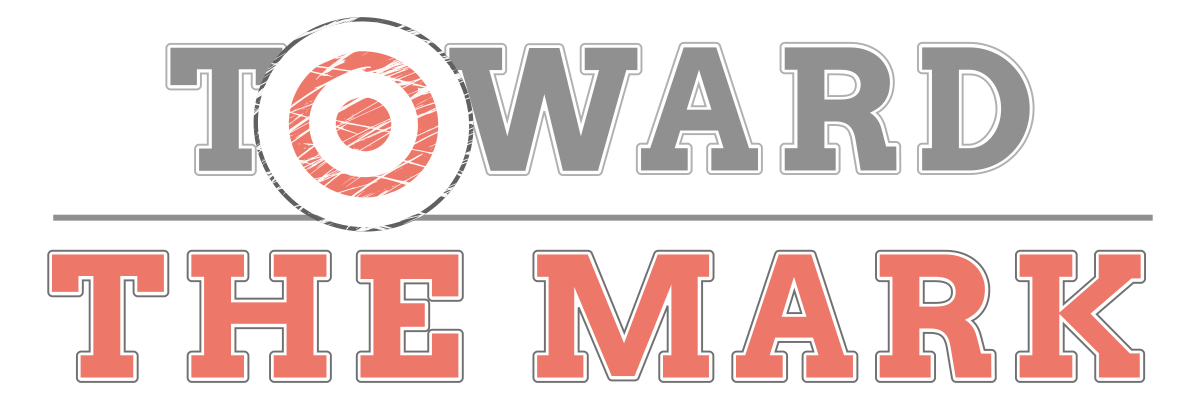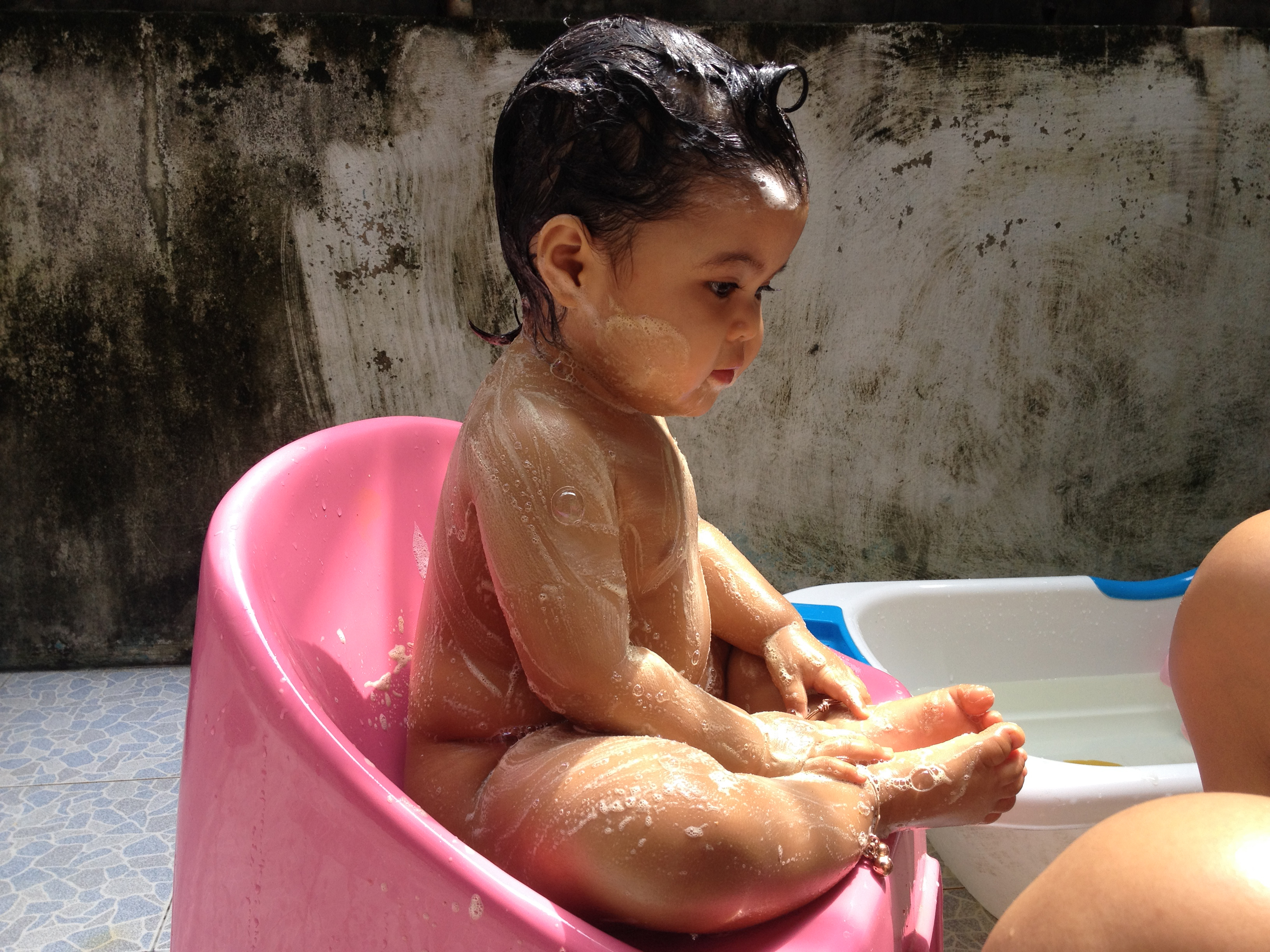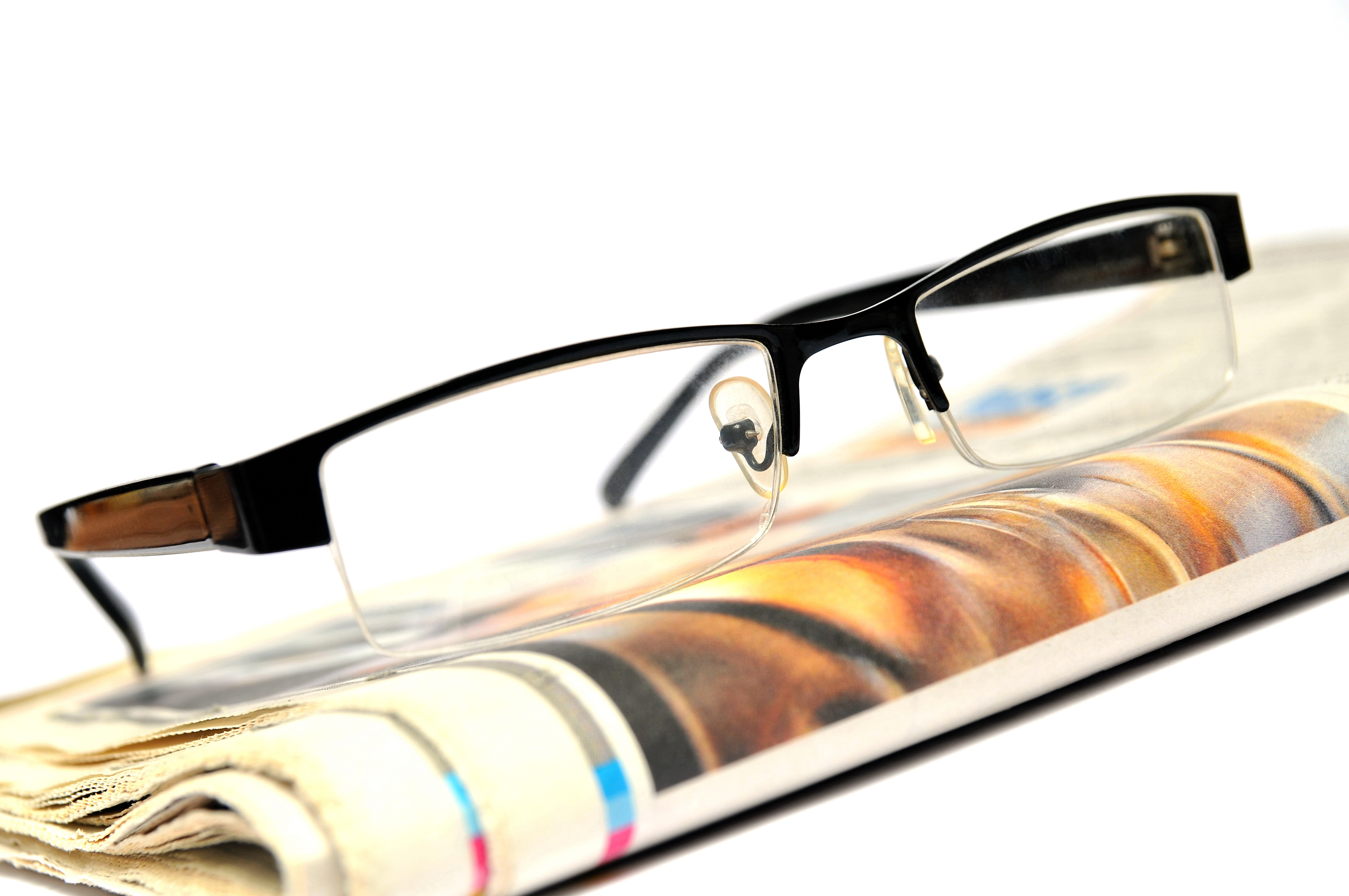The Tabrenacle

Some interesting facts...
Why was the Tabernacle built?
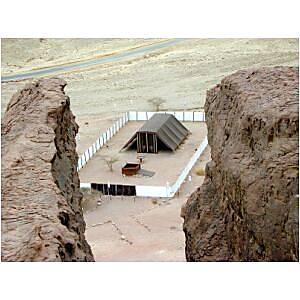
To be God’s dwelling place among his people (Ex. 25:8,22).
How was the Tabernacle going to be built?
According to the pattern that God showed Moses (Ex. 25:9).
Who built the Tabernacle?
Bezalel, the son of Uri, the son of Hure, of the tribe of Judah; Oholiab the son of Ahisamach of the tribe of Dan;
every wise hearted man and women (Ex. 35:25, 30, 34).
The sections of the Tabernacle
- The Holiest of all, the Holy of Holies
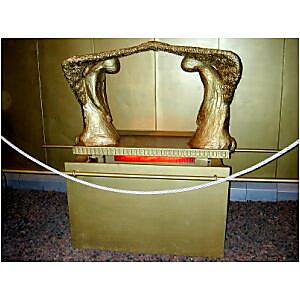
- The Holy place , or the Sanctuary.
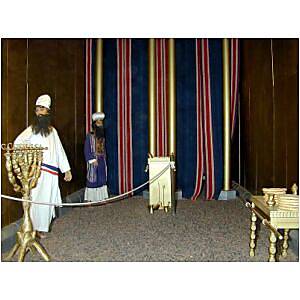
- The court of the Tabernacle
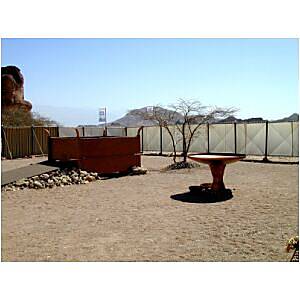
Metals used in the Tabernacle
- Gold: typifies the deity of our Lord Jesus Christ, and also of divine righteousness (melting point 1946 F)
- Silver: typifies redemption (melting point: 1761 F)
- Copper (brass): typifies the death of Christ when He endured the judgment of God to atone for man’s sin on the cross (melting point: 1982 F)
Liquid used in the Tabernacle
- Blood: typifies atonement
- Water: typifies the Word of God
- Oil: typifies the Spirit of God
Curtains
-
- Fine linen: typifies the spotless, pure and holy humanity of the Lord Jesus
- Blue: typifies Christ as the one from heaven
- Purple: typifies the emperor glory of Christ as king of kings
- Scarlet: typifies the glory of Christ as the king of Israel
- Curtain of goat’s hair: typifies Christ as prophet
- Curtain of ram’s skin dyed red: typifies Christ’s devotedness to God’s glory even to death
- Curtain of badger’s skin: typifies Christ as seen by the eyes of natural man
Wood used in the Tabernacle
- Shittim wood (acacia wood): typified the humanity of the Lord Jesus; also of the believer as seen in the boards.
The ascending scale in the Tabernacle
In the court brass and silver were used. The ordinary person could enter in.
In the holy place silver and gold were used. Only the priest could enter.
In the holiest of all pure gold only was used. Only the high priest could enter.
There were no seats or windows in the tabernacle!
The General View
Let’s take a look at the Tabernacle.
From a distance, we see fencing with linen hanging, 100 cubits long and 50 cubits wide, fixed on 60 sturdy pillars (Ex. 27:9). In our measurements, this would be about 90 feet by 180 feet. The roof of the house rises above the fencing to a height of 10 cubits. The roof is not colored or bright.
Seen from here it is not very attractive at all. But are the things of God not attractive?
As we draw near, the enclosure becomes more impressive. Its white curtains, contrasting with the grey tent around, give an immediate impression of the purity and holiness inside. Because of its height, 5 cubits or some 9 feet, no one can see over it.
The Gate (Ex. 27:16)
What a beautiful big door!
- The door is 20 cubits, about 40 feet. Not many doors are as wide as that. God is a saviour, and wants all men to be saved (1 Tim. 2:3,4).
- It is a beautiful door of 4 colors: blue, purple, and scarlet, embroidered on white. They all speak to us of the Lord Jesus.
- The door is easily entered. It is not wood or metal; it is a curtain 20 cubits wide and 5 cubits high. Young or old can enter.
- There is only one door. The Lord Jesus said, "I am the door: by me if any man enter in he shall be saved" (Jn. 10: 9).
The Brazen Altar (Ex. 27:1)
The large, brazen altar of burnt offering stood inside the court; it was 5 cubits wide, 5 cubits long and 3 cubits high. In the middle of this altar was the grating on which the fire burned. The altar was made of acacia wood, obtained from a tree that grew in the desert. The wood is a type of the manhood of the Lord Jesus (see Isa.53:2, 11:1; Gal. 4:4). The wood of the altar was covered with brass. Brass typifies the power that can withstand the fire of God’s judgment. No man and no angel had the power to undergo the judgment of God — only the righteous one, the holy Son of God.
Christ the atonement of his people
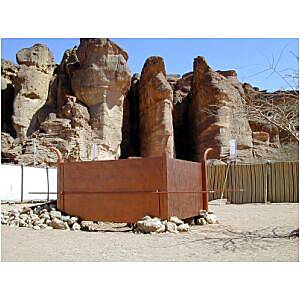
The Lavar (Ex. 30:17-21)
Between the altar of burnt offerings and the sanctuary stood the laver, filled with water. It was made from the mirrors of the women (Ex. 38: 8). The mirrors at that time were made out of polished brass. No dimensions are given for the laver.
p>
Christ the atonement of his people
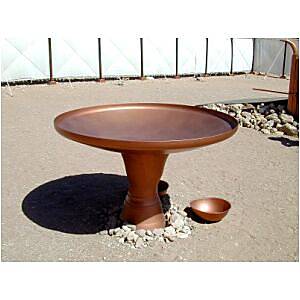
Here the priest had to wash their hands and feet before they could enter the sanctuary. Because of their daily tasks and their path through the desert sand, they were continually defiled. To be able to continue their work before God they had to wash at the laver again and again. So it is with each believer.
The New Testament does not recognize a special caste of priests, or laymen for that matter. Now there is a common priesthood of all believers.
So each time the believer sins or becomes defiled he must return to God with confession; in this way he is cleansed.
The House
Let us examine the construction of the house.
The boards: (Ex. 26:15-30). The house was built of large boards of acacia wood. Every board was 10 cubits high (15 feet) and 1 1/2 cubits wide (2 ¼ feet). Altogether there were 48 such boards. The boards were held together by 4 bars, inserted through golden rings, holding the boards together and keeping them standing. Under each board there were 2 blocks of silver weighing about 90 pounds each.
The curtains: The boards for the walls and the pillars from which the curtains were hanging might be called the frame of the building. Over this frame 4 large tent curtains were spread on top of each other. Together they formed the roof of the building.
Standing in the sanctuary looking up one would see:
- The first curtain, 40 by 28 cubits, woven and embroidered in the four following colors: white linen, blue, purple, scarlet.
- Over it lay a second curtain, 44 by 30 cubits, made of goat’s hair.
- The third covering was a curtain made of ram skins dyed red.
- The outer covering was made of badgers skins.
The Holy Place
When the coverings are taken away, we look inside the holy place. The walls, standing 10 cubits high, were covered with gold. The entrance to the holy place was closed off by a curtain woven of the four colors: white, blue, purple, and scarlet. It was 10 cubits wide and 5 cubits high. Only priests were allowed to go in.
The Golden Candlestick (Ex. 25:31-40)
It was of pure gold, not simply cast, but forged out of one talent of gold by an able goldsmith with a hammer. The shaft of the candlestick with the six arms or branches formed a whole. The seven oil lamps that were on it gave light in the darkness. The lamps were filled with olive oil.
Christ the light of his people
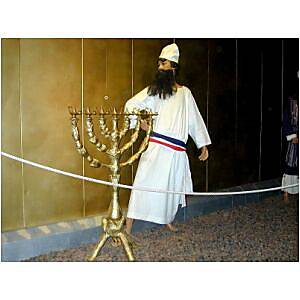
The Golden Table, the Table of Showbread (Ex. 25:23-30)
It was made of acacia wood covered with gold. It was 2 cubits by 2 cubits and it was 1 ½ cubits high. It had a golden crown as a border. On it there were twelve loaves of bread and a vessel of wine (Ex. 25:29). Every Sabbath the loaves of bread were eaten by the priests and replaced by new loaves.
Christ the food of his people
12 loaves: represented the twelve tribes of Israel
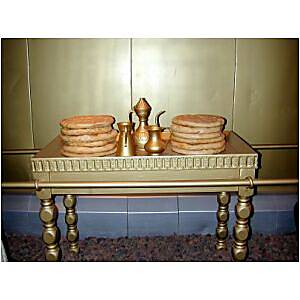
The Golden Altar of Incense
The Golden Altar of Incense was not used to offer animal sacrifices as was the great brazen altar in the court; only sweet-smelling incense could be burnt on it. It was made of acacia wood covered with gold. The altar was rather small, only a cubit square, but it was relatively high: 2 cubits. The incense was burnt in the golden censer on it.
Christ the object of worship of his people
Incense: typifies the perfections of Christ as fragrance to God
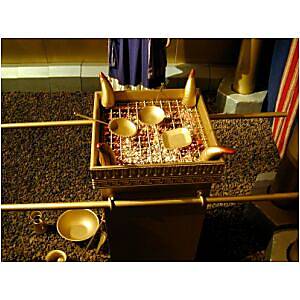
The Holy Of Holies
The Veil
The Veil closed off the entrance to the Holy of Holies. It was a curtain 10 cubits wide and 10 cubits high woven in the four colors: white, blue, purple, and scarlet. It portrayed cherubim as well. Only the high priest was allowed to enter into the Holy of Holies, and only once a year, on the Day of Atonement.
Cherubim
Cherubim, angelic creatures, were God’s messengers of judgment.
The Ark of the Covenant
The Ark of the Covenant was made of acacia wood 2 ½ cubits long by 1 ½ cubits wide and 1 ½ cubit high. It was covered within and without with pure gold. Three things were in the ark:
- Golden pot containing manna (typifies Christ’s perfect humanity, and as food for His people in the wilderness).
- Aaron’s rod that budded (priesthood of Christ).
- The tables of the law (the Lord is the only one that kept the law).
The Mercy Seat
The Mercy Seat was a plate of pure gold, 2 ½ cubits by 1 ½ cubits, which lay on the ark. From the two ends of the mercy seat rose two cherubim of gold, which were formed out of the same piece. The faces of the cherubim were turned to the blood that the high priest had sprinkled on mercy seat on the Day of Atonement.
Christ our propitiation
The Glory of the Lord seen in the Cloud (Ex. 40:36-38)
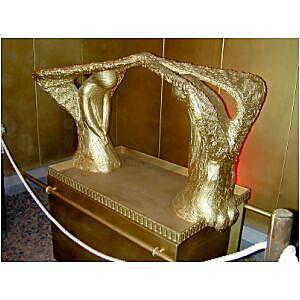
A cloud rested on the tabernacle above the place where the ark stood. This cloud indicated the presence of the Lord. It also functioned as a guide while the people of God journeyed.
(Pictures used with permission of http://www.bibleplaces.com)
